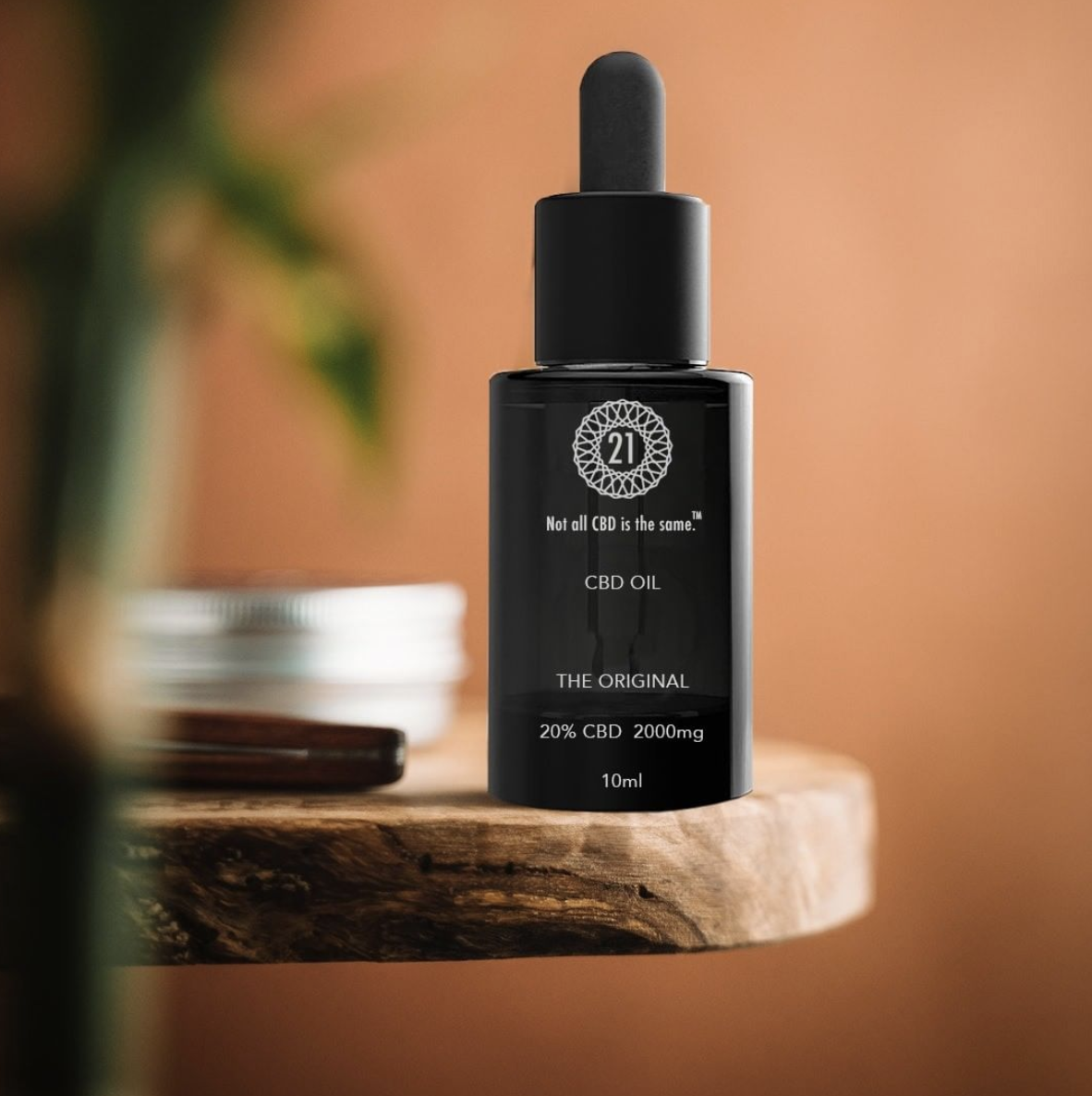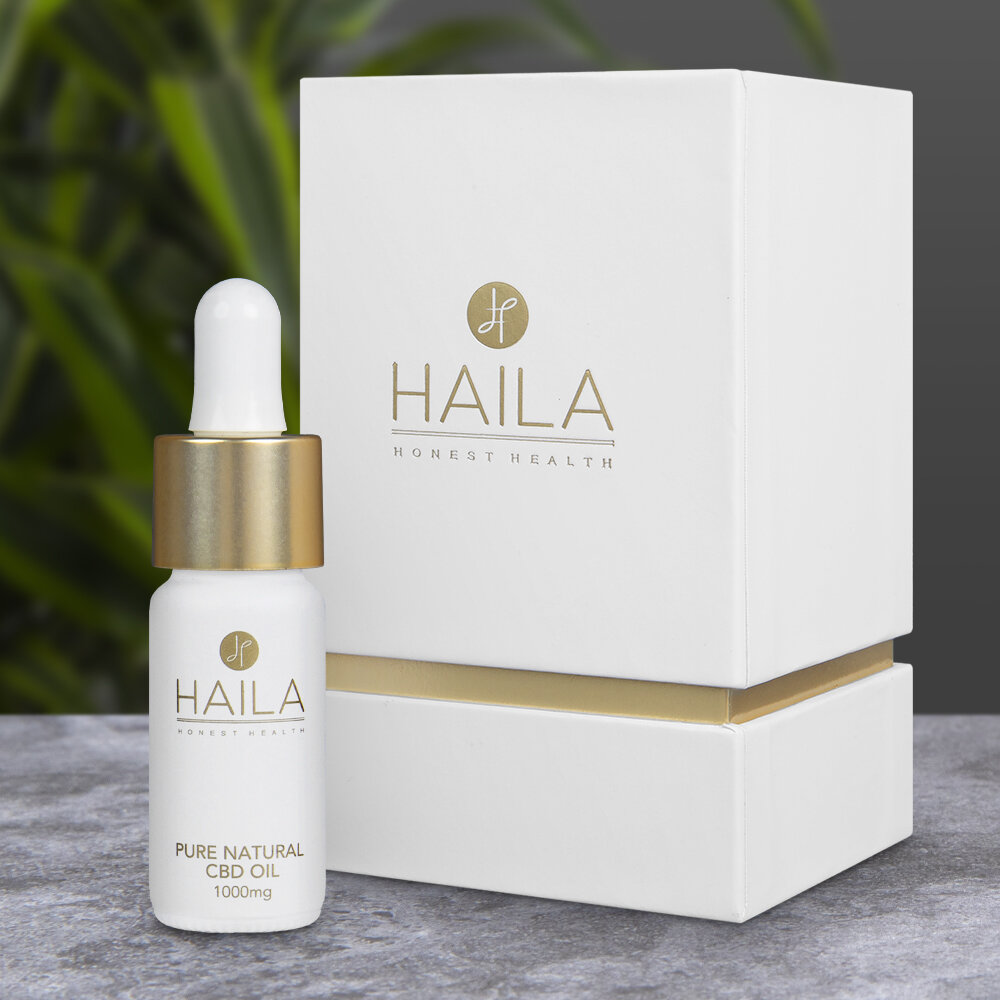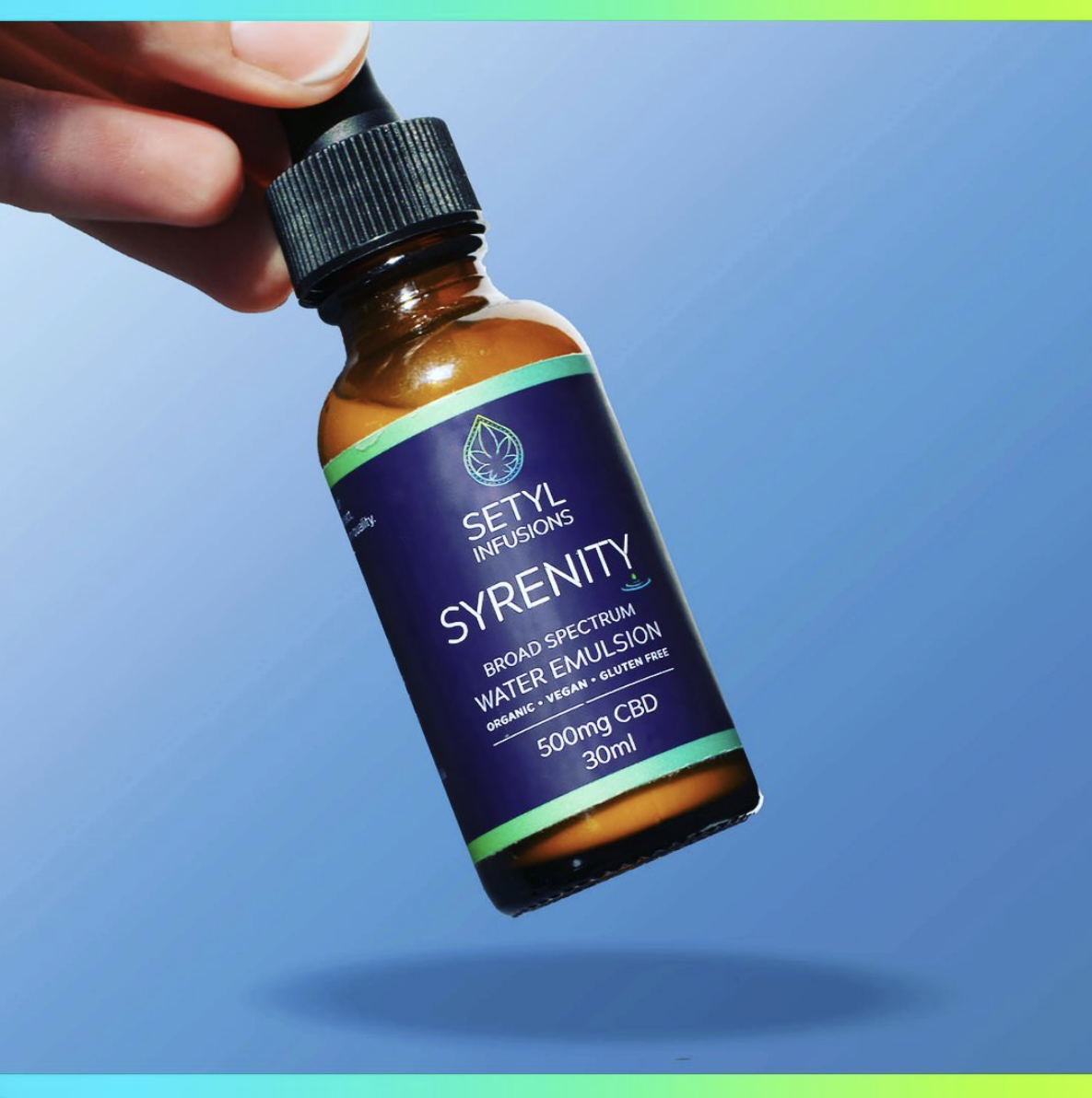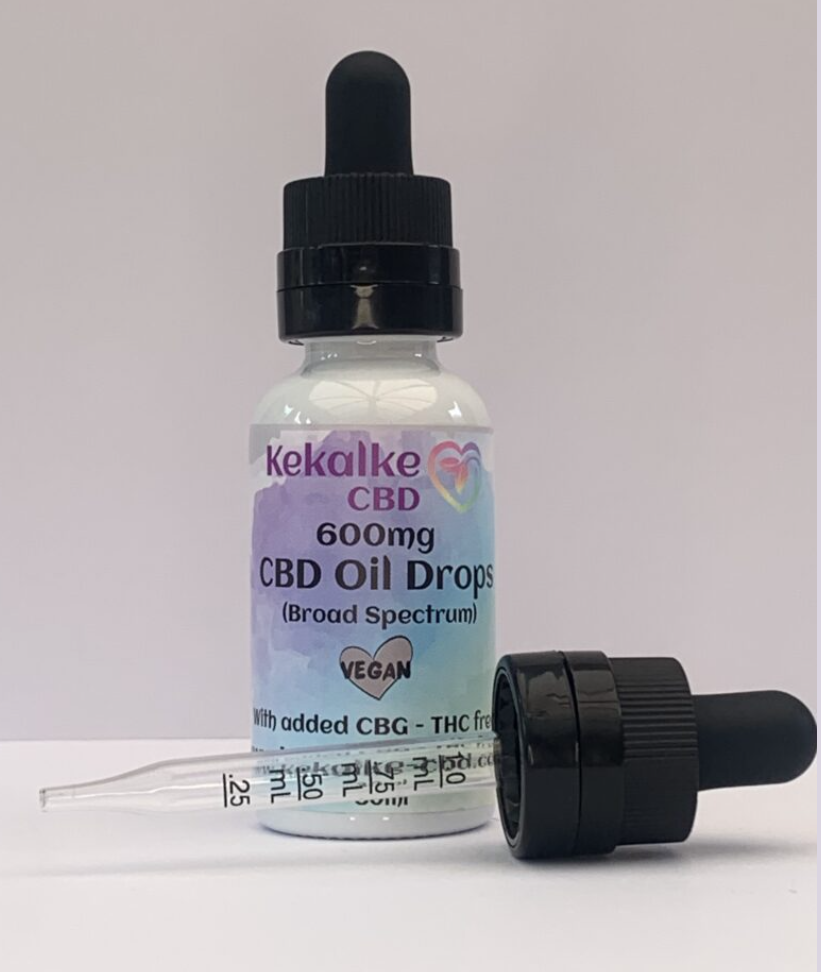EVERYTHING YOU NEED TO KNOW ABOUT CBD
CBD — AKA cannabidiol, a compound found in hemp and cannabis plants — has been part of my world for the last eight years. I’ve even used it successfully with my dogs as a complementary treatment for anxiety when we moved home with our street dogs. I first discovered it as a sleep and stress relief aid eight years ago via some friends in the holistic health industry. Over the years, I watched CBD become more and more mainstream and its now readily available to purchase on the high street in many different forms — from dropper bottles for winding down before bedtime or gummies for on-the-go, to beauty products or even in soft drinks and snack bars.
CBD is no new phenomenon, as it has been an ancient remedy for insomnia, anxiety, and pain relief and much more, but despite its recent resurgence into the mainstream there is still much confusion about what it actually is. And doesn’t it get you high?! (The answer is no, by the way, but more on that below!) I’ve asked CBD expert and makeup artist Justine Jenkins to help me delve a bit further into CBD and what you should be looking for if it’s a remedy you’d like to use.
Justine Jenkins is a highly acclaimed makeup artist with over 23 years’ experience working with British and international celebrities. Justine, or JJ as she is known, is also a leading sustainable and ethical cruelty-free cosmetic pioneer and ambassador: for the last 9 years, she has been committed to raising awareness for animal cruelty in the cosmetic industry, working alongside a number of charities including PETA and Humane Society International. Cruelty-free, vegan, organic and sustainable beauty is her speciality. Over to you, Justine:
What is CBD, in short?
CBD stands for Cannabidiol, one of over 80 cannabinoid compounds in the cannabis plant.
What do we need to know about cannabis plants?
Cannabis is a flowering plant originating from Asia, with many sources believing it to specifically originate from the Tibetan mountains. Cannabis Sativa is the main species, but you also have Cannabis Indica and Cannabis Ruderalis. Most commercial Cannabis is grown indoors, however it’s a hardy plant so wild cannabis can also grow outdoors in virtually every country.
Are cannabis and hemp plants the same thing?
Yes and no. They are the same plant, but hemp is the term used to describe cannabis plants cultivated to contain less than 0.3% THC (tetrahydrocannabinol). THC is the psychoactive compound in the cannabis plant. (NB: CBD can be extracted from both cannabis and hemp plants.)
When did you first discover CBD?
My first introduction to CBD was because of my beloved cat Frodo. Sadly he got diagnosed with terminal cancer on my birthday in 2017. As I informed friends about my devastating news, two people on two consecutive days said the same thing to me: try medicinal cannabis. I of course knew about cannabis, but medicinal cannabis? And for animals? I’m well versed in plant medicine, but I didn’t really understand what they were talking about, so I did some research. I’m what I would call a spiritual person, and if the universe sends me the same message two days in a row, I listen. This triggered a journey of investigation and deep fascination. A CBD product for pets was recommended to me, and I started giving it to Frodo daily. It didn’t save his life, but it did give him a smoother transition. He had an appetite right the way up to 24 hours before he died, consistently slept well, seemed happy, and the holistic vet we consulted weekly assured us he wasn’t in any pain.
After Frodo died, I found an American educational platform that was offering cannabis courses. I signed up, and a year later became a certified expert. Of course I’m not a doctor; however, I can speak with some experience and authority on the endless benefits of this magical plant medicine.
What are the benefits of CBD?
CBD can be used to alleviate feelings of anxiety and depression, it can help you sleep, and it has antiviral, anti-inflammatory, antibacterial and neuro-protective qualities.
How can you take CBD?
CBD comes in many forms, the most popular being ingestible oils which you place under the tongue. If you want to take CBD in a more public place like work for example, CBD gummies or capsules are invaluable. You can also find CBD teas and chocolates. CBD bath bombs are one of my favourites to relieve aches and pains and topical gels and creams are fantastic for aching muscles and joints.
How often should you take CBD, and what's the best time to take it?
CBD is designed to be taken daily to get the most benefit. Most CBD has a calming effect so many people find it beneficial to take before bed. You can also use CBD in the morning to take the edge off any anxiety. If you no longer feel your CBD is working like it used to, take a break of 48 hours, as this resets your cannabinoid system.
Is CBD for everyone?
Like anything, there will be some people who don’t like using CBD or don’t feel any benefits, but they are in the minority. If you don’t like the taste of oils, try one with added peppermint or orange, or a flavoured gummy instead. All mammals have an endocannabinoid system, which is made up of cannabinoid receptors throughout our body. The role of this system is to bring us back to homeostasis (internal stability). The cannabinoids in the cannabis plant bind to those receptors to enhance healing and homeostasis, so it can be used as a healing tool for all mammals.
Does CBD get you high?
No, CBD does not get you high. The psychoactive cannabinoid in cannabis is THC (tetrahydrocannabinol). CBD contains a maximum of 0.2% of THC, which is negligible.
If it's so good and has been around so long, why are we only just interested now?
Cannabis has actually been used for centuries as a medicine. In more recent times, during the 1800s and early 1900s, cannabis was a common ingredient in many medicines. Physicians viewed it as a safe substance to use. Even Queen Victoria used it during childbirth. In the 1910s and ‘20s, the US had an influx of immigrants and the police needed a reason to detain, search and deport them. They looked to cannabis prohibition to do that. They even coined the term “marijuana” by joining the two most common Mexican names at the time, Marie and Juan. Government official Harry Anslinger, a well-known racist, led the charge against cannabis, and in 1937 introduced “The Marihuana Tax Act” which financially prevented doctors from using cannabis through the introduction of large fines. Doctors were blindsided, and by the time they realised that the “marihuana” referred to in the bill was indeed cannabis, it was too late to reverse the act. Anslinger personally threatened any doctors who opposed the bill. So as you see, cannabis has had a long history of slander incorporated by the state and by the government for their own dubious underhand purposes, not the good of the people. The fact that we have been prevented from knowing the great healing benefits of this magical plant is in my opinion a catastrophic social injustice of the greatest kind.
What's the official medical stance on CBD?
A natural plant like cannabis cannot be patented, so there is less financial interest/incentive from pharmaceutical companies who can afford to undertake clinical trials in order to “prove” efficacy. The pharmaceutical lab-synthesised version of THC for epilepsy was developed, but these medicines were hugely expensive. Whilst most doctors will not consider cannabis a viable medical option, they cannot deny patient experience. Therefore they are starting to trust patients to use cannabis if it helps them. A few doctors support its use, and I’ve even seen a doctors-led CBD clinic emerge in central London, which now has seven clinics around the country. Many other alternative health practitioners support the use of cannabis and I expect to see more and more GPs and doctors pivot their opinions.
Why is it so taboo?
After the introduction of “The Marihuana Tax Act,” cannabis (hemp) was decimated by big corporations. At the time, textiles were largely made from hemp. The company DuPont was developing textiles like nylon and needed to discredit hemp in order to ensure the success of their new petrochemical-based textiles. They used their influence to introduce infomercials like Reefer Madness to the general public, which depicted cannabis (hemp) as a dangerous substance that would ruin lives. These infomercials, which you can still view online, in addition to the US government linking cannabis to immigrants who did not at the time have public support, turned it into something dangerous and illegal. Sadly, this sank deep into the public consciousness, and has remained so to this day.
How do you choose a quality CBD product? What should you look out for when shopping for CBD?
I always recommend a full or broad spectrum CBD product as opposed to an isolate CBD, as isolates can make some people feel jittery, especially if taken close to a cup of coffee. Isolates don’t contain all the other lovely cannabinoids which have a synergistic effect called the “entourage effect.” This means the cannabinoids all work alongside each other for the greatest efficacy. Other than that, it is (I’m afraid) a case of jumping in and trying them. Ask for friends’ recommendations and you can always ask me!
Hemp is being grown in the UK for bio materials but not for CBD, which we still have to import! Can you speak to that?
Hemp is the most incredible sustainable plant and even rejuvenates the soil it’s grown in! Industry is starting to utilise its many uses, but it is still being thwarted as a natural medicine. Different regulations come into play, which prevent it being grown extensively as a medicinal crop. I can only assume that the strong link between pharmaceutical companies and world governments does not want the progression of CBD unless it is controlled by them.
So watch this space for this age-old remedy to gain even bigger recognition in the wellbeing space. As with any self-care practice, it’s down to the individual to decide what works best for them, so if you’re inspired to try CBD for yourself and see what it can offer, you here are a few of mine and Justine’s favourite products:
A full-spectrum CBD oil, 21Atoms is made with only pure, natural ingredients and no added nasties. It can help with anything from acne to anxiety.
Haila bring us a CBD oil that’s natural, vegan, cruelty-free and gluten-free in collaboration with an experienced producer. They also never use GMOs nor toxic metals, plus the packaging will look fab on your bathroom shelf.
A UK-based brand, Setyl Infusions create CBD aimed at helping you find balance in a natural way. Their signature product is a “water emulsion” developed with great care and using ethical production methods.
Kekalke carry an affordable CBD range that includes everything from oils to bath bombs, from topicals to… peanut butter. They are a family-owned brand who want to make CBD products accessible to everyone, because they know how beneficial they can be firsthand.
Central Valley source their CBD from California, and are one of Justine’s favourites thanks to the high quality of their products and their commitment to Earth-friendly practices.
Use Justine30 for 30% off






